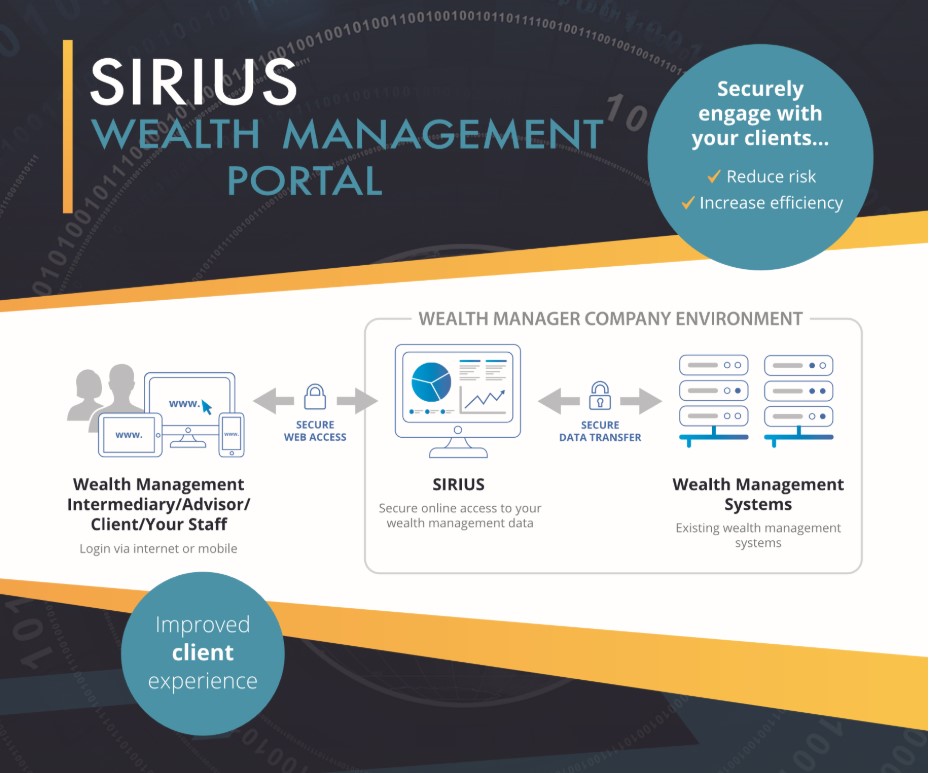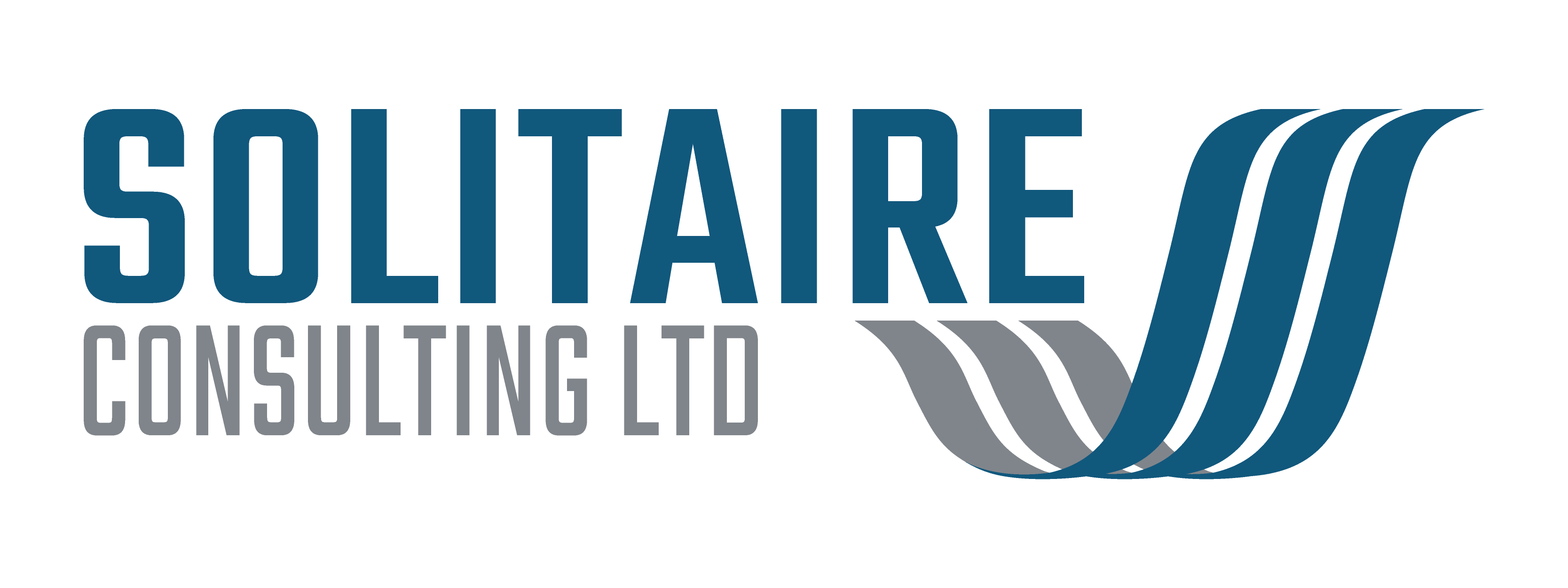Sirius from Vega Solutions is a new web portal application. It has the potential to transform the way trust and corporate services providers do business.
Customer web portals are nothing new, particularly in financial services. How many of us haven’t used an online e-banking system, for example. Using web portals and mobile apps as a means to communicate with your financial services provider is now common place. However, this is not universally the case in the trust administration and corporate services sector. Why is this?
I have been working in this sector for many years and almost every trust and corporate services provider (we’ll call them CSPs in this article) I have worked with has a portal on their wish list. Few of them have implemented one though.
This could be because of the lack of sophisticated tools in the market.
Although many of the providers of trust and corporate services software offer web portals, none of them are particularly good. There is also the issue of how to represent your brand to your customers. This is why those CSPs who do have a portal have generally developed it themselves.
There are also the regulations around substance and beneficial ownership to consider. Many CSPs believe they can’t provide too much information to their clients. This is because beneficial owners of managed companies and settlors of trusts, could be deemed to be ‘controllers’. Under current tax reporting regulations this could have serious implications for both CSP and customer.
Second Generation Web Portals
This sets the scene for the next generation of wealth portals, which is characterised by collaboration and streamlining business processes. We’ll call these ‘second generation portals’. First generation portals work on a simple one-to-one basis, with clients or intermediaries communicating directly with their wealth management provider. This communication can include messaging, document distribution or view only access to structures and accounts.
The portal provides a view into the CSP data, but doesn’t play a part in processing that data, other than by passing messages.
The second generation portals are based on a many-to-one principle. The portal acts as a communication hub facilitating communication and data collection between service provider, clients and their advisers. This includes lawyers, investment advisers, property managers, tax specialists and accountants.
I’ve discussed this concept before, in my blog on Digital Transformation of the Supply Chain.
Sirius Wealth Management Portal
An example of this type of second generation system is Sirius from Vega Solutions. Vega are a niche Fintech business based in the UK, close to Basingstoke. They are ideally placed to serve clients in the Crown Dependencies and City of London, which they have been doing successfully for many years. Built on a track record of developing secure e-banking systems and wealth portals for investment managers, the Sirius Wealth Management Portal does everything you’d expect from a second generation portal application. Sirius has been developed from the ground up for the wealth management and trust administration sector.

I’ve been working as an adviser to Vega for the last couple of years. I’ve have been very impressed with their technology and vision of how second generation portals should work.
It is early days yet, but the feedback on the Sirius Wealth Management Portal has been extremely positive so far. The biggest problem is getting potential clients to see that this is not just another portal for the wish list. It is an essential piece of technology that has the potential to transform their business.
Client On-Boarding
Take client on-boarding as an example. This is a complex process for a regulated CSP. Multiple parties interact over a period of time to ensure all the due diligence has been carried out, in accordance with the applicable regulations. I know of instances where this process can take weeks if not months. Any efficiencies that can be gained will ultimately benefit all parties involved in the transaction.
Sirius can act as the broker of these interactions, collating data that can be reused by multiple parties. It is task based with tasks grouped into stages which form part of projects for ease of management. The screenshot below shows the simple but effective user interface which provides a dashboard of tasks for the particular user. With appropriate permissions users can reassign tasks to other team members if needed.

Sirius is fully responsive and works eaually well on a conventional PC/laptop, tablet or mobile phone.
All these interactions with external parities are taking place in the secure portal environment. The tasks are under the control of the CSP and the workflows will control which processes need to be passed back to other systems within the internal CSP IT environment. E.g. once all on-boarding data has been collated in the portal, Sirius will initiate the process to create the structures in the core administration system (systems such as 5Series, NavOne, ViewPoint etc.)
Sirius is built with similar data structures as these trust administration systems. Therefore its own database can be used to collect and store data that is needed during the transaction. Only when this data has passed the appropriate tests will it be transferred to the CSP to populate the various structures in the core records. This process can be done automatically or interact directly with trust system workflows.
As far as I am aware, this way of working is unique. This is why I am very positive about the potential of Sirius to help transform wealth management businesses.
In addition to the collaboration features of Sirius, it also has more conventional portal features. This includes being able to drill down into the client structures to show assets, portfolios and accounts. With Sirius’ roots as an e-banking system it is not surprising that these capabilities are handled very well, including the ability to initiate payment requests.

The future of portals
Web portals, such as the early versions of Vega’s banking systems, started out as a convenient way to provide access to a financial services provider using the internet. The internet acted as the portal into the CSPs internal systems, through appropriate firewalls and security measures.
With more and more businesses adopting cloud based systems, and enterprise systems themselves becoming more accessible through the use of microservices and APIs, it is inevitable that the traditional web portal will also change.
Vega’s Sirius portal provides a tool that solves a real problem that many CSPs are struggling with. Complex transactions such as client on-boarding or asset purchases are taking too long. They also have to collect and maintain a lot of information for compliance and due diligence. Sirius enables this to be done in an efficient and effective way.
If you have found this article interesting and would like to know how technology like Sirius could help your business, then please get in touch for an informal discussion. If you have a specific interest in Sirius itself I’d be happy to make an introduction to Vega Solutions. Use the contact form below in the first instance.





